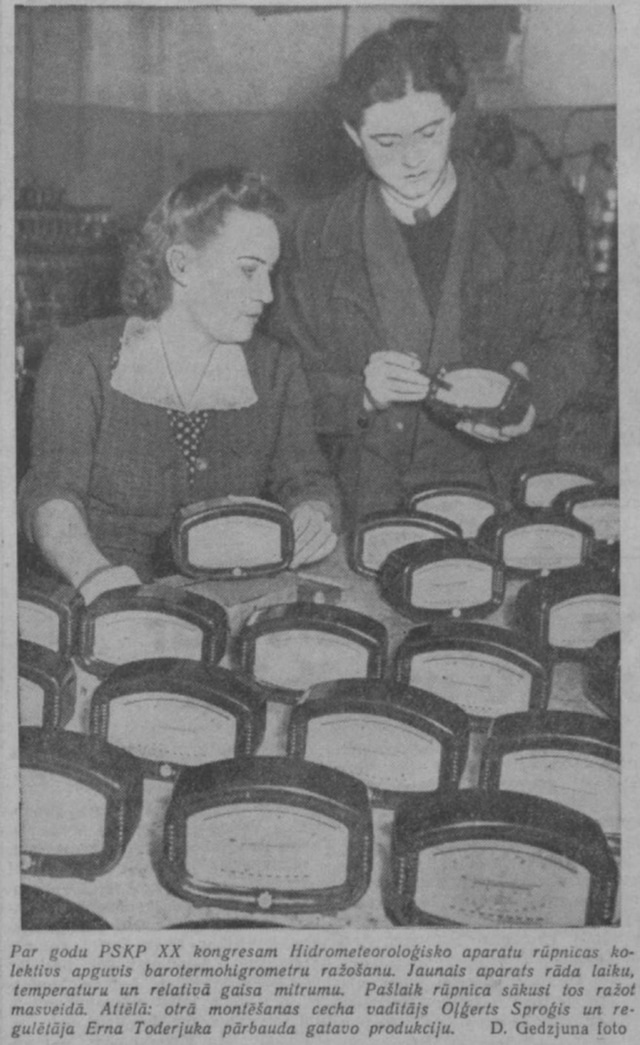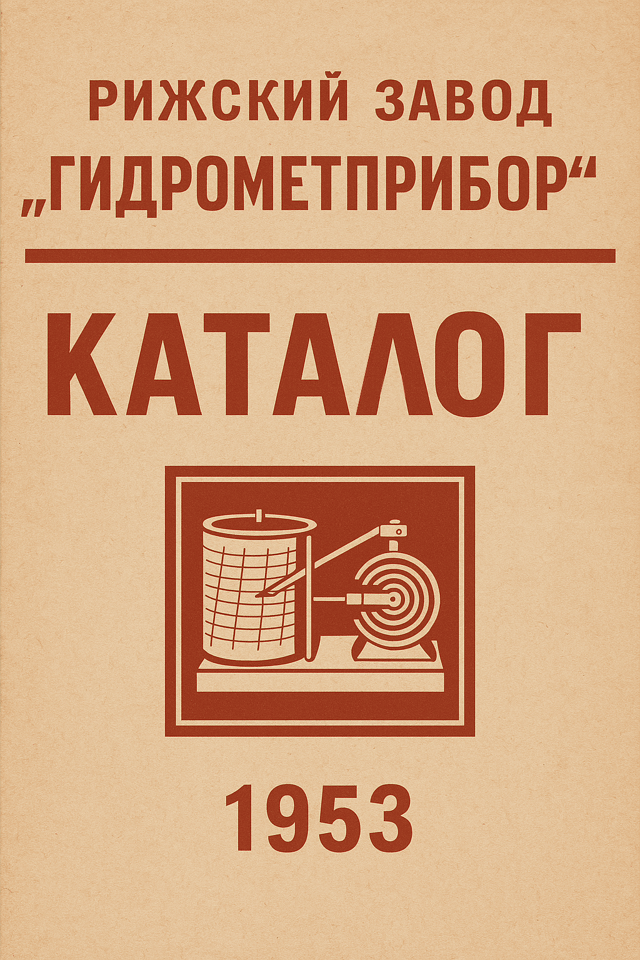

Riga Plant “Gidrometpribor” (ГУГМС z-d GMP)
Foundation and Purpose
The Riga “Gidrometpribor” Plant was established on September 25, 1945, by decree of the Council of People’s Commissars of the USSR, in response to the urgent need to restore hydrometeorological instrumentation in the postwar years. The factory was located in Riga, Latvian SSR, on the grounds of former 19th-century cork and textile factories, which had suffered heavy wartime damage. Initially known as Riga Instrument-Making Plant No. 305, it was under the authority of the Red Army’s Chief Directorate of Hydrometeorological Service (ГУГМС).
On February 11, 1946, the plant was transferred to a civilian authority — the Chief Directorate of the Hydrometeorological Service under the USSR Council of Ministers — and was renamed Riga Hydrometeorological Instrument Plant. In its early years, the factory also produced consumer goods to support operations while gradually launching meteorological instrumentation for state needs.
Products and Specialization
Over the decades, the plant developed and manufactured dozens of hydrometeorological devices. By the 1960s, its output included 87 types of equipment, including:
The factory also occasionally produced consumer items — like decorative thermometers — but retained a core focus on scientific equipment.
Administrative Oversight and Management Structure
The plant’s organizational affiliation shifted several times throughout its Soviet-era existence:
Following Latvian independence in 1991, the plant was transferred to the Latvian Ministry of Industry and restructured.
Development in the 1950s–1980s
In the 1950s, the factory expanded steadily, growing from a few dozen workers to several hundred. By 1965, it employed over 1,700 workers, operated 10 major workshops, 7 production lines, and 19 service departments. A dedicated design bureau was established for R&D, enabling the plant to prototype and launch new devices rapidly.
The 1970s were a peak period. The Riga plant became one of the Soviet Union’s primary suppliers of hydrometeorological instruments, many of which were adopted as standard equipment across the USSR’s national meteorological network.
By the 1980s, the plant had begun incorporating electronics into its instruments and developing semi-automated weather stations. It was involved in both civilian and military projects. After 1985, as part of the Tekhnopribor association and later under Gidropribor, the factory retained a leading role in instrumentation design. However, by the end of the decade, economic turmoil and reduced funding affected operations.
Export and International Role
The Riga plant exported its products to the meteorological services of 19 countries, mainly in the Eastern Bloc (COMECON), including East Germany, Poland, Czechoslovakia, Bulgaria, Hungary, and Cuba. Its radiosondes, barographs, and weather station equipment were also used in Asia and Africa under USSR-backed programs. These exports bolstered the USSR’s international technical cooperation and provided the plant with a stable workload through the 1980s.
Post-1991 Transformation and Closure
After Latvia regained independence in August 1991, the plant was removed from Soviet jurisdiction and restructured into a state-owned Latvian company named “Prognoze” (officially established October 1, 1991). The firm attempted to adapt to market conditions by diversifying its product lines to include automation systems, measuring instruments, and some consumer electronics.
On March 30, 1994, it was re-registered as Valsts SIA “Prognoze”, a state-owned limited liability company. However, in the absence of state orders and amid fierce competition, the company struggled. By 1996, it declared bankruptcy and ceased operations.